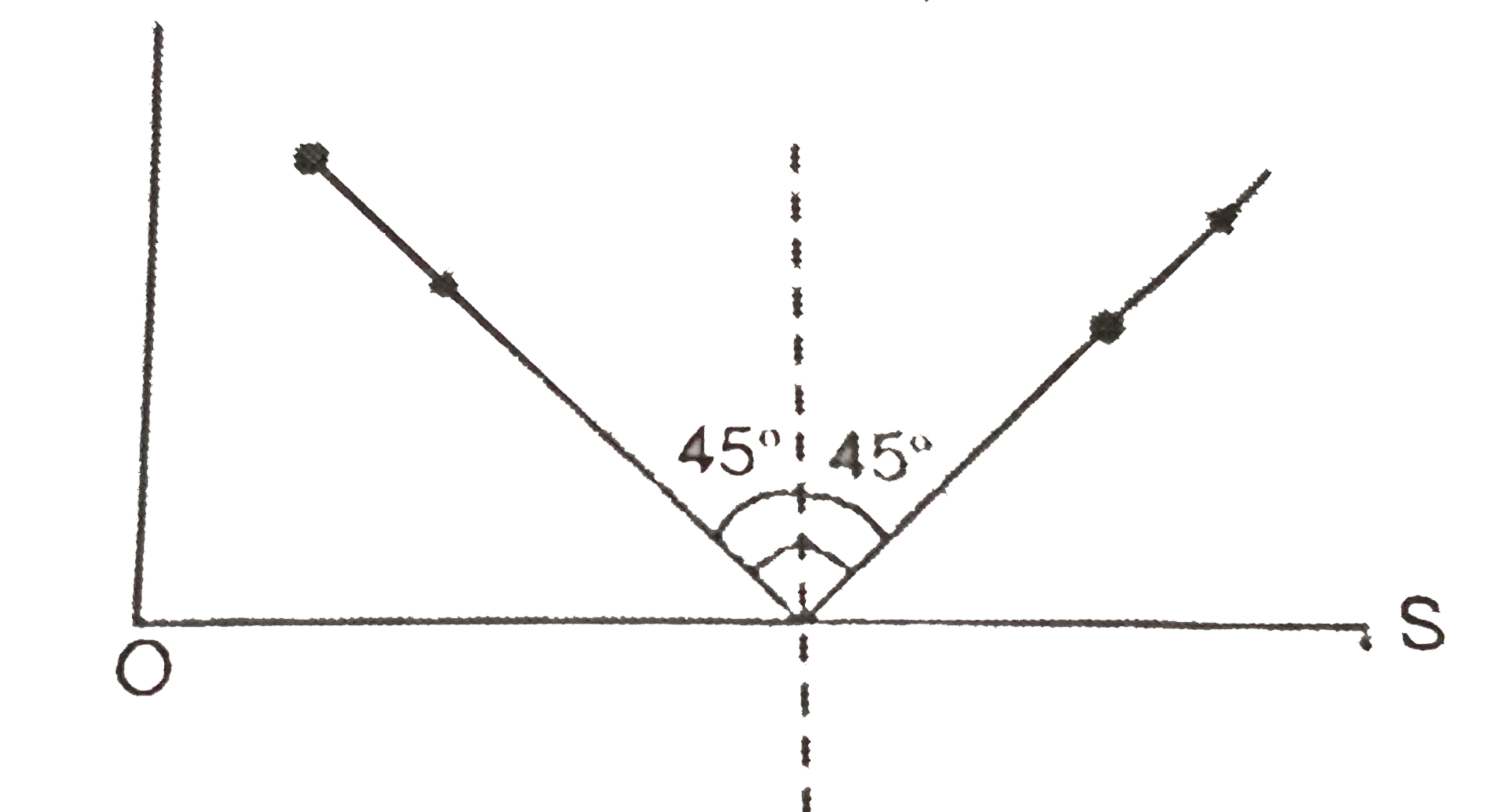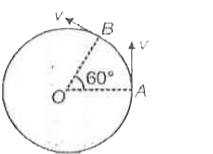An object is moving in a circle at constant speed v. The magnitude of rate of change of momentum of the object.
is zero
is proportional to v
is proportional to v2
is proportional to v3
The correct Answer is:C
To solve the problem of finding the magnitude of the rate of change of momentum of an object moving in a circle at constant speed v, we can follow these steps:
Step 1: Understand the concept of momentum
Momentum (p) of an object is defined as the product of its mass (m) and its velocity (v):
p=mv
Step 2: Identify the nature of motion
The object is moving in a circle at a constant speed. Although the speed is constant, the direction of the velocity is continuously changing. This means that the momentum of the object is also changing due to the change in direction.
Step 3: Determine the rate of change of momentum
The rate of change of momentum (dpdt) is equal to the net force acting on the object, according to Newton's second law:
dpdt=F
Step 4: Identify the type of force involved
For an object moving in a circle, the force that keeps it in circular motion is called the centripetal force. This force acts towards the center of the circle and is responsible for changing the direction of the velocity.
Step 5: Calculate centripetal force
The centripetal force (Fc) required to keep an object of mass m moving at a speed v in a circle of radius r is given by:
Fc=mv2r
Step 6: Relate centripetal force to rate of change of momentum
Since the rate of change of momentum is equal to the centripetal force, we can write:
dpdt=mv2r
Step 7: Conclusion
Thus, the magnitude of the rate of change of momentum of the object is:
dpdt=mv2r
Final Answer
The magnitude of the rate of change of momentum of the object is mv2r.
---
Momentum (p) of an object is defined as the product of its mass (m) and its velocity (v):
p=mv
The object is moving in a circle at a constant speed. Although the speed is constant, the direction of the velocity is continuously changing. This means that the momentum of the object is also changing due to the change in direction.
The rate of change of momentum (dpdt) is equal to the net force acting on the object, according to Newton's second law:
dpdt=F
For an object moving in a circle, the force that keeps it in circular motion is called the centripetal force. This force acts towards the center of the circle and is responsible for changing the direction of the velocity.
The centripetal force (Fc) required to keep an object of mass m moving at a speed v in a circle of radius r is given by:
Fc=mv2r
Since the rate of change of momentum is equal to the centripetal force, we can write:
dpdt=mv2r
Thus, the magnitude of the rate of change of momentum of the object is:
dpdt=mv2r
The magnitude of the rate of change of momentum of the object is mv2r.
Topper's Solved these Questions
- BOOK - RESONANCECHAPTER - DAILY PRACTICE PROBLEMSEXERCISE - DPP 505videos
DAILY PRACTICE PROBLEMS
- BOOK - RESONANCECHAPTER - DAILY PRACTICE PROBLEMSEXERCISE - dpp 517videos
DAILY PRACTICE PROBLEMS
- BOOK - RESONANCECHAPTER - DAILY PRACTICE PROBLEMSEXERCISE - dpp 484videos
DAILY PRACTICE PROBLEMS
- BOOK - RESONANCECHAPTER - CURRENT ELECTRICITYEXERCISE - Exercise54videos
CURRENT ELECTRICITY
- BOOK - RESONANCECHAPTER - ELASTICITY AND VISCOCITYEXERCISE - Advanced Level Problems9videos
ELASTICITY AND VISCOCITY
Similar Questions
A particle is moving in a circle of radius having centre at 0. with a constant speed V. The magnitude at change in velocity in moving from A to B is 60°
View SolutionA force F=(2tˆi+3t2ˆj)N acts on an object moving in XY-plane. Find the magnitude of change in momentum of the object in the time interval t=0 to t=2s.
View Solution
Knowledge Check
- Question 1 - Select One
An object moving in a circular path at constant speed has constant
AEnergyBVelocityCAccelerationDDisplacement - Question 2 - Select One
A particle is moving on a circular path with constant speed v. The magnitude of the change in its velocity after it has described an angle of 90∘ is :
AvB√2vC0D√3 v - Question 3 - Select One
An object is moving with variable speed, then
AIts velocity may be zeroBits velocity must be variableCIts acceleration may be zeroDIts velocity must be constant
An object moving along a straight line with a constant speed is said to be in _____
View SolutionA 5 kg object with speed of 30m/s strikes a steel plants at an angle 45∘ and rebound at the same speed and same angle (Fig. 3.43). Calculate.
(a) the magntiude of the change is momentum of the object and

(b) the change in the magnitude of the momentum of the object.View SolutionAn object with a constant speed :
View SolutionAn object of mass m is projected vertically upwards. The rate of change of momentum of the object will be equal to
View SolutionA particle is moving in a circle of radius r having centre at O with a constant speed v . The magnitude of change in velocity in moving from A to B is
 View Solution
View Solution

